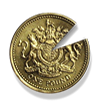8th of May, World Donkey Day
Every 8th of May, International Donkey Day is celebrated, with the aim of raising awareness about the importance of protecting and conserving this species. In this interview with our director, Dr. Elena Barrio, we tell you more about why we exist and what makes our work so special.
Good morning, we are here at El Refugio del Burrito to celebrate International Donkey Day. Could you tell us what El Refugio del Burrito is and what its mission is?
Certainly, the Donkey Sanctuary is the Spanish subsidiary of The Donkey Sanctuary, the largest donkey protection organization in the world. Based in England, with 55 years of experience, it operates in 36 countries.
Our mission is to ensure that ALL donkeys have a good quality of life. In Spain, we have been working for 21 years to improve the rights and welfare of these extraordinary animals.
How many donkeys and mules do you have under your care in Spain?
In Spain, we have two centers, one in Malaga with 65 animals and another in Badajoz, where 138 donkeys and mules reside, making it the largest donkey sanctuary in Europe.
We also have another 94 donkeys placed in foster homes throughout Spain.
In total, about 300, but our mission goes far beyond our work in the sanctuaries; this is just the tip of the iceberg. Our main challenge is to improve the lives of the thousands of donkeys and mules living in Spain, and we are achieving this through education and collaboration with authorities, veterinarians, and other NGOs fighting for the welfare of equids.
Why do associations like yours exist? What are some of the current problems facing donkeys, both in Spain and globally?
Unfortunately, donkeys continue to be victims of abuse and exploitation worldwide.
In Spain, neglect of basic care, abandonment, or lack of identification are serious issues, along with a lack of awareness about their needs and basic care.
Globally, the greatest threat facing these animals is the Chinese demand for a product derived from donkey skin, ejiao, which is a traditional Chinese remedy. This demand is decimating donkey populations in Asia and Africa at an alarming rate.
We see that you have very different donkeys, in terms of size and color. What are the reasons for these differences?
There are more than 180 donkey breeds worldwide, yet only a very small portion are officially recognized. One could say that breeds result from geographic isolation. This diversity is due to factors such as geographical environment, climate, and the needs of local communities. For example, here we can see smaller gray donkeys with the mark of the black cross that remind us of the African donkey, taller donkeys with white fur resembling the Andalusian donkey, and dark donkeys with white muzzles that likely have a mix with the Catalan donkey.
In Spain, seven donkey breeds are recognized, with the Catalan and Andalusian donkeys being the most numerous. However, most donkeys are crossbreeds.
Donkeys are very peculiar animals. Could you share with us some interesting characteristics about them?
Certainly, donkeys were domesticated 7000 years ago and since then, due to their strength, endurance, and adaptability to the environment, they have been used to assist humans in essential tasks such as agriculture, transportation, carrying loads, herding, fetching water from wells... they are the true drivers of economic development!
Contrary to popular belief, donkeys are incredibly intelligent and affectionate animals. They are often underestimated, but they are very sensitive and have a strong emotional connection with their caregivers.
They have an incredible memory and a great instinct for survival. At the Sanctuary, we have many examples of donkeys that have surprised us with their abilities, like Nila, the donkey, who opens doors despite all the obstacles we put in her way.
Lastly, why is it important to protect donkeys and what message would you send to the public about this issue?
Protecting donkeys is essential to preserve our history, culture, and biodiversity. They deserve to live without suffering, and their great contribution to humanity should be fully appreciated.
I encourage you to learn more about this animal, to support our initiatives, and to adopt a more compassionate attitude towards this animal that has given us so much.




